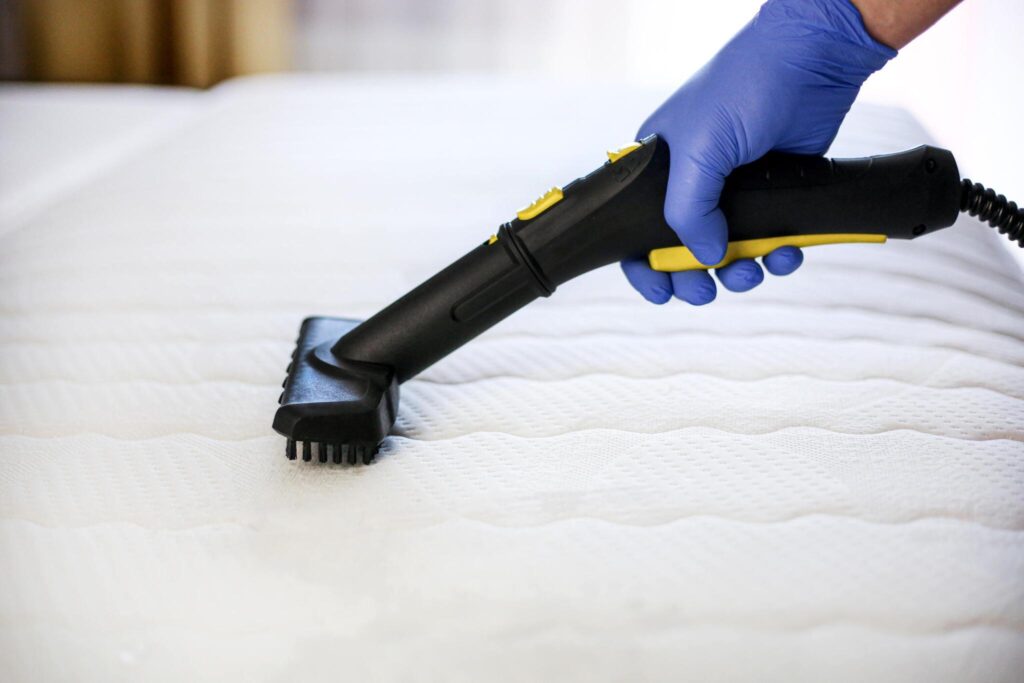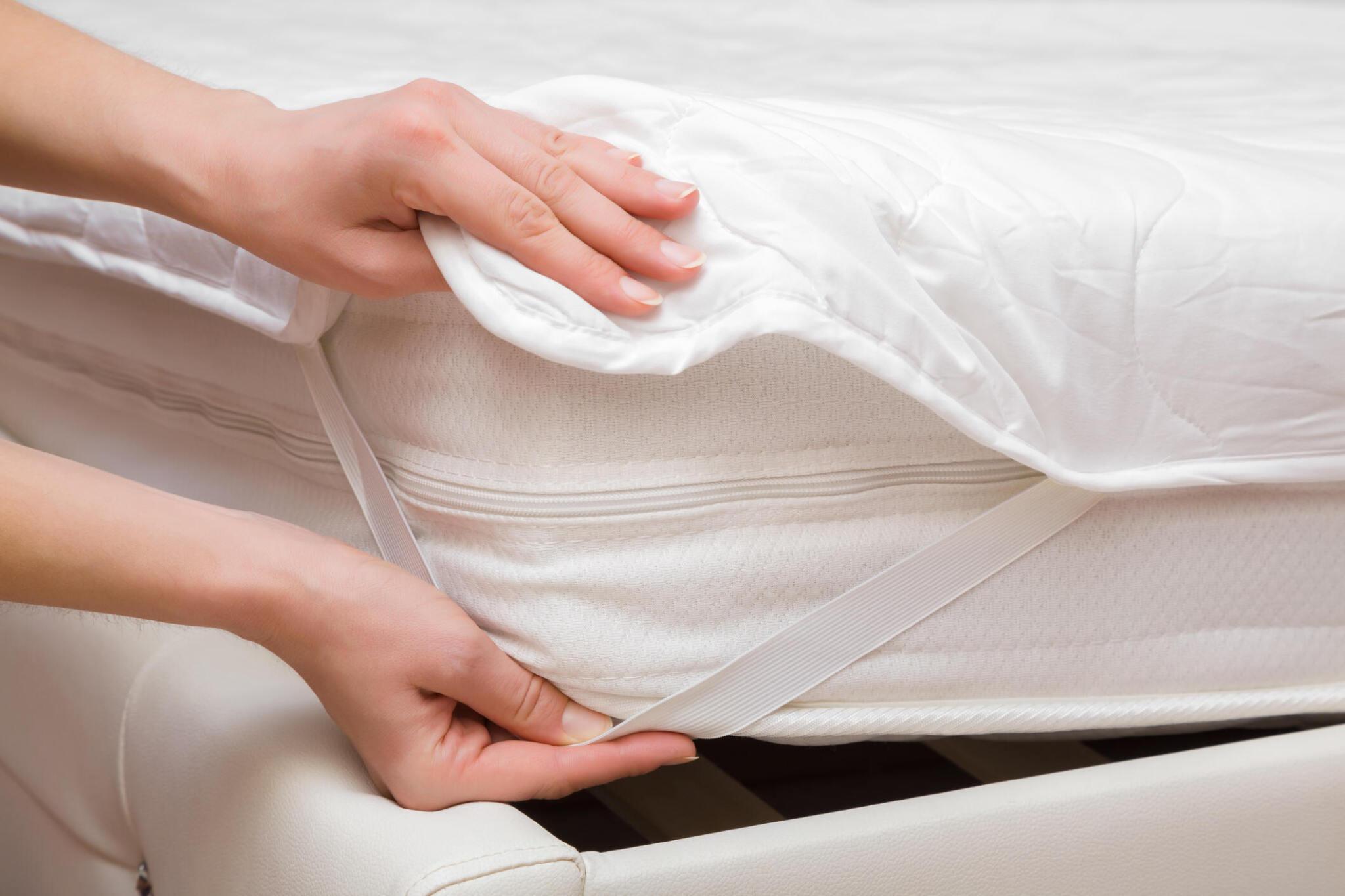Your mattress is one of the most essential pieces of furniture in your home. It’s where you spend about a third of your life, affecting your health, comfort, and well-being. That’s why it’s essential to take good care of your mattress and keep it in optimal condition.
A well-maintained mattress can last up to 10 years or more, depending on the type and quality. A poorly maintained mattress, on the other hand, can deteriorate faster, lose its support and comfort, and harbour dust mites, allergens, and bacteria. Click Here to read out our detailed Article post on How to Choose Right mattress For you.
In this article, we’ll share some tips on how to care for and maintain your mattress life to extend its performance. We’ll cover how to clean, protect, and rotate your mattress regularly and deal with common issues such as stains, odours, and sagging.
How to Clean Your Mattress

Cleaning your mattress is an essential part of mattress maintenance. It helps remove dirt, dust, sweat, dead skin cells, and other contaminants that can accumulate on your mattress over time. Cleaning your mattress also enables you to prevent and remove stains, odours, and pests.
Here are some steps to follow when cleaning your mattress:
- Vacuum your mattress: Use a handheld or upholstery attachment to vacuum your mattress thoroughly. This will help you remove dust, crumbs, hair, and other debris from the surface and crevices of your mattress. Vacuum your mattress at least once every two months or more often if you have pets or allergies.
- Spot-clean your mattress: If you notice any stains or spills on your mattress, act quickly and spot-clean them with a mild detergent and water. Avoid using harsh chemicals, bleach, or ammonia, as they can damage the fabric and foam of your mattress. Use a clean cloth or sponge to dry the stain gently, then blot it dry with a towel. Do not rub or scrub the stain, which can spread or push it deeper into the mattress.
- Deodorize your mattress: If it smells musty or unpleasant, you can deodorize it with baking soda. Sprinkle some baking soda evenly over the entire surface of your mattress, and let it sit for a few hours or overnight. The baking soda will absorb the odours and moisture from your mattress. Then, vacuum the baking soda off your mattress with a clean attachment. Add a few drops of your favourite essential oil to the baking soda for a fresh scent.
- Steam-clean your mattress: If your mattress needs a deeper cleaning, you can steam-clean it with a handheld or rental steam cleaner. Steam cleaning can help kill bacteria, germs, and dust mites and remove stubborn stains and odours. Follow the instructions of your steam cleaner, and make sure to use a low-moisture setting. Do not saturate your mattress with water, as this can cause mould and mildew growth. After steam cleaning, let your mattress air dry completely before putting on any bedding.
How to Protect Your Mattress
Protecting your mattress is another crucial aspect of mattress maintenance. It helps prevent stains, spills, and damage to your mattress and extends its comfort and support. Protecting your mattress also creates a healthier and more hygienic sleeping environment.

Here are some ways to protect your mattress:
- Use a mattress protector: A mattress protector is a removable, washable cover that fits over your mattress like a fitted sheet. It acts as a barrier between your mattress and your body, as well as your bedding and the environment. A mattress protector can help you protect your mattress from liquids, stains, dust, allergens, and pests. It can also help you reduce wear and tear on your mattress and preserve its warranty. Choose a mattress protector that is breathable, waterproof, and hypoallergenic, and wash it regularly according to the manufacturer’s instructions.
- Use a mattress pad or topper: A mattress pad or topper is an extra layer of padding that goes on top of your mattress, under your fitted sheet. It can help you enhance the comfort and support of your mattress and regulate its temperature. A mattress pad or topper can also help you protect your mattress from dirt, sweat, and pressure. Choose a mattress pad or topper that suits your preferences, whether memory foam, latex, wool, cotton, or feather. Make sure to clean your mattress pad or topper regularly by washing, drying, or airing it out.
- Use quality bedding: The bedding you use on your mattress can also affect its condition and performance. Quality bedding can help you keep your mattress clean, comfortable, and cosy. Choose soft, durable, easy-to-wash bedding, such as cotton, linen, or bamboo. Avoid bedding that is synthetic, rough, or prone to pilling, such as polyester, nylon, or flannel. Wash your bedding at least once a week or more often if you sweat or have pets.
How to Rotate Your Mattress

Rotating your mattress is another essential practice of mattress maintenance. It helps you evenly distribute your mattress’s wear and tear, preventing sagging, indentations, and lumps. Rotating your mattress also enables you to extend its lifespan and comfort.
Here are some tips on how to rotate your mattress:
- Check your mattress type: Not all mattresses need to be rotated, depending on their type and construction. Some mattresses are designed to be one-sided, meaning they have a specific top and bottom layer that should not be flipped over. These include most memory foam, latex, and hybrid mattresses. Other mattresses are designed to be two-sided, meaning they have similar layers on both sides that can be flipped over. These include some innerspring, foam, and air mattresses. Check your mattress label or manual to see if your mattress is one-sided or two-sided, and follow the manufacturer’s recommendations.
- Rotate your mattress regularly: If your mattress needs to be rotated, you should do it regularly to maintain its shape and support. The frequency of rotation depends on your mattress type, usage, and preference, but a general rule of thumb is to rotate your mattress every three to six months. You can rotate your mattress whenever you notice uneven wear, such as sagging, indentations, or lumps.
- Rotate your mattress properly: You need to follow a few steps to rotate your mattress correctly. First, remove all the bedding and any objects from your mattress. Second, lift your mattress carefully and rotate 180 degrees so the head becomes the foot and vice versa. If your mattress is two-sided, you can flip it over so that the top becomes the bottom and vice versa. Third, adjust your mattress to fit your bed frame and ensure alignment and level. Fourth, put back your bedding and any objects on your mattress.
Conclusion
Your mattress is more than a piece of furniture. It’s a valuable asset for your well-being, comfort, and health. That’s why you should take good care of your mattress and keep it in optimal condition.
Following the tips in this article, you can learn how to care for and maintain your mattress to extend its lifespan and performance. You can also enjoy a cleaner, healthier, and more comfortable sleeping experience.
Remember to clean, protect, and rotate your mattress regularly, and you’ll be able to sleep soundly on your mattress for years to come. 😊







